What are Spot Welders
Spot welders are specialized pieces of equipment used for joining metal sheets or parts together without the need for filler materials or fluxes. They are essential tools in various manufacturing processes, being particularly prevalent in the automotive industry, electronics manufacturing, and construction. Spot welders can be found on assembly lines, in repair shops, and even in some hobbyist's garages, demonstrating their versatility across different scales of operation.
The principle behind spot welding is relatively simple yet highly effective. It involves the application of pressure and electrical current to metal pieces at a designated point. The equipment has two copper alloy electrodes that conduct a high current through the workpieces. The resistance to the electric current in the metals generates heat, which, along with the pressure applied by the electrodes, causes the metals to fuse together at specific points, creating a "spot weld." This process is fast and efficient, resulting in strong welds that can withstand significant stress.
The beauty of spot welding lies in its simplicity and speed. The technique is not only quick but also energy-efficient, making it a cost-effective method for mass production. It requires minimal preparation and finishing work compared to other types of welding, allowing manufacturers to save time and reduce costs. Spot welders are designed to be user-friendly, with controls that often allow operators to adjust settings such as welding time and pressure to accommodate different materials and thicknesses.
Types of Spot Welders
Within the category of spot welders, there exists a range of machines tailored for specific applications and material types. Here's an overview of some common varieties:
Pedestal Spot Welder: This type of spot welder is mounted on a pedestal stand and operated using a foot pedal or automatic mechanism. It is ideal for consistent production work where parts are brought to the machine. The pedestal design provides stability and allows for larger welding jobs.
Portable Spot Welder: As the name implies, portable spot welders are lightweight and easy to move around. They are used for repair work or in situations where the materials cannot be brought to a fixed machine. These welders offer flexibility and convenience for on-site work.
Bench Top Spot Welder: These compact spot welders are designed to fit on a bench or tabletop, making them suitable for smaller workshops or limited spaces. They cater to light-duty welding tasks and can handle a variety of smaller parts.
Automatic Spot Welder: Featuring advanced controls and automation capabilities, these spot welders are used in industrial applications where precision and repeatability are crucial. They often include programmable logic controllers (PLCs) and can be integrated into automated production lines.
Resistance Spot Welder: This common type of spot welder operates by passing an electrical current through the resistance provided by the material itself to generate heat for welding. It is widely used in various industries due to its ability to create strong welds quickly.
Each type is designed with particular uses in mind, ensuring that businesses can select a model that aligns with their specific requirements.
How to Choose Spot Welders
Choosing the right spot welder for your business involves weighing several factors against your operational needs and objectives. Here's what should be considered:
Material Type: Different metals require different levels of heat and pressure to be welded effectively. Ensure that the spot welder you choose is capable of handling the types of metals you'll be working with, such as steel, stainless steel, aluminum, or copper alloys.
Thickness: The thickness of the materials you plan to weld influences the power requirements of your spot welder. Thicker materials generally need more powerful machines capable of delivering higher currents.
Production Volume: Consider whether you need a machine designed for high-volume production environments or if a lower-capacity model would suffice based on your expected workload.
Automation Level: Evaluate your need for manual versus automated operations. While manual machines provide hands-on control for small batches or custom work, automated machines offer efficiency and consistency for larger-scale production runs.
Workspace Constraints: Factor in your available space when selecting a spot welder—some models require more room or specific installations to operate effectively.
Customization Needs: If your operation has specific requirements that standard models can't meet, look for suppliers who offer customized support such as OEM services.
By considering these aspects in light of your business's unique needs—whether you're involved in manufacturing plants, repair shops, or construction—you'll be better equipped to select a spot welder that helps you achieve efficient and reliable results.
Best Spot Welders on Alibaba.com
When sourcing spot welders for industrial use or resale purposes, Alibaba.com stands out as a leading wholesale marketplace connecting businesses with a vast network of suppliers worldwide. The platform is renowned for its extensive listing of machinery across numerous categories including a wide range of spot welders suitable for various industries like automotive manufacturing, electronics production, and even specialized applications such as lithium-ion battery assembly.
On Alibaba.com, buyers have access to machinery tailored to their specific needs—from manual models catering to bespoke manufacturing processes to fully automated systems designed for high-efficiency production lines. With detailed product descriptions and specifications readily available on the site, businesses can make informed decisions while taking advantage of features such as Trade Assurance—a service that enhances transaction security by safeguarding payments until delivery completion.
Alibaba.com's commitment to making global trade more accessible is evident through its user-friendly interface that supports local languages and mobile buying ease. Furthermore, the platform's capability to facilitate bulk purchases alongside options for customization reflects its adaptability to serve both large-scale buyers and businesses seeking niche solutions. By choosing Alibaba.com as your source for wholesale spot welders, you're not just procuring equipment; you're tapping into an ecosystem designed to support business growth through strategic partnerships with trusted suppliers around the globe.
Common FAQs for Spot Welders
What is spot welding and how does it work?
Spot welding is a process that joins metal pieces together by applying pressure and heat generated from an electrical current at the weld point. It is accomplished using two copper alloy electrodes to conduct the current and create the weld.
What materials can be joined using spot welders?
Spot welders are commonly used to join various metals including steel, stainless steel, aluminum, and copper alloys. The specific capability of a spot welder to handle different materials depends on its design and power specifications.
Are spot welders suitable for heavy-duty welding tasks?
Yes, some types of spot welders, such as pedestal and automatic spot welders, are designed for heavy-duty applications and can handle larger parts with greater material thicknesses.
Can spot welders be used for high-volume production?
Automatic spot welders with advanced controls and automation capabilities can be integrated into production lines for high-volume manufacturing, offering efficiency and consistent quality.
Do spot welders require special training to operate?
While spot welders are designed to be user-friendly, operators should have a basic understanding of welding principles and safety precautions. Some machines may require more specialized training due to their complexity or automation features.
How do I choose the right size and type of spot welder for my business?
Selecting the right spot welder involves considering factors like the types and thicknesses of materials you'll be welding, your production volume, workspace constraints, and any customization needs your process may have.
Is it possible to automate the spot welding process?
Yes, there are fully automated spot welding machines available that can be programmed for precise operation in high-volume or repetitive tasks, reducing manual labor and increasing productivity.
Can spot welders handle different metal thicknesses?
Most spot welders allow operators to adjust settings such as welding time and pressure to accommodate varying metal thicknesses. It's important to choose a machine with a suitable power range for the materials you'll be working with.
What kind of maintenance do spot welders require?
Regular maintenance for spot welders typically includes cleaning the electrodes, checking electrical connections, and ensuring moving parts are well-lubricated. Specific maintenance schedules should be followed according to the manufacturer's recommendations.
Are portable spot welders as effective as stationary models?
Portable spot welders are effective for on-site repairs or where materials cannot be brought to a fixed machine. However, they may have limitations in power or capacity compared to larger stationary models.
How does material conductivity affect spot welding?
Material conductivity plays a significant role in spot welding since the process relies on electrical resistance to generate heat. Metals with higher conductivity might require different settings or specialized equipment to achieve proper welds.
Can I use a single-phase power supply for a spot welder?
Some smaller benchtop or portable spot welders are designed for single-phase power supplies; however, more powerful industrial models typically require a three-phase power supply for operation.
What safety features should I look for in a spot welder?
Look for safety features such as protective guards, emergency stop buttons, heat shields, and audible alarms. Proper safety training and personal protective equipment (PPE) are also essential when operating any welding equipment.
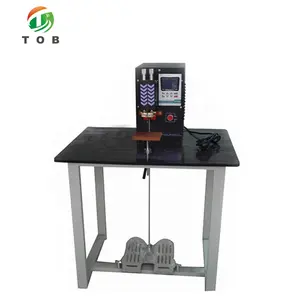
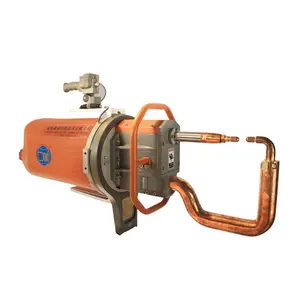













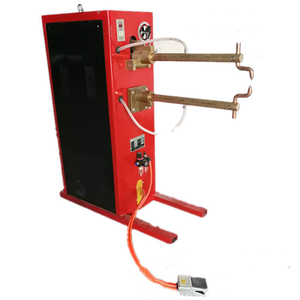

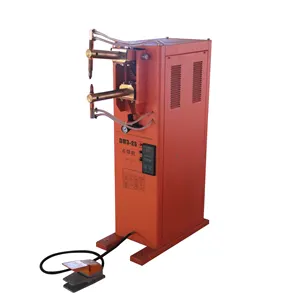





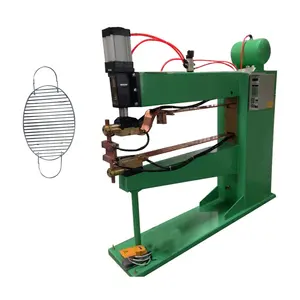







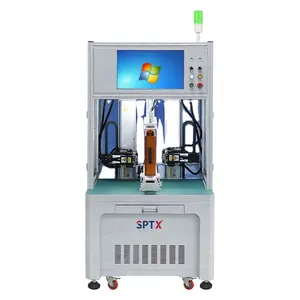
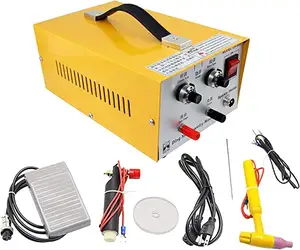






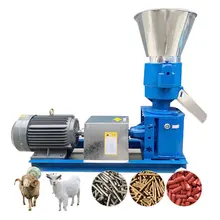

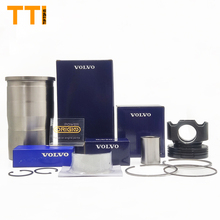
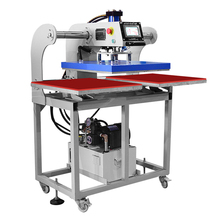
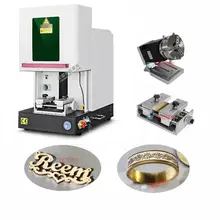


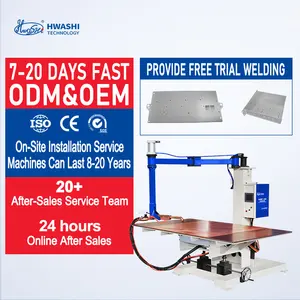



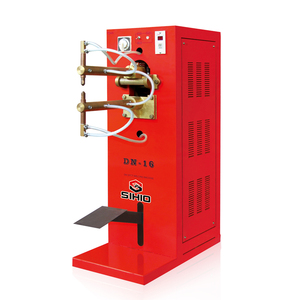

























 浙公网安备 33010002000092号
浙公网安备 33010002000092号 浙B2-20120091-4
浙B2-20120091-4